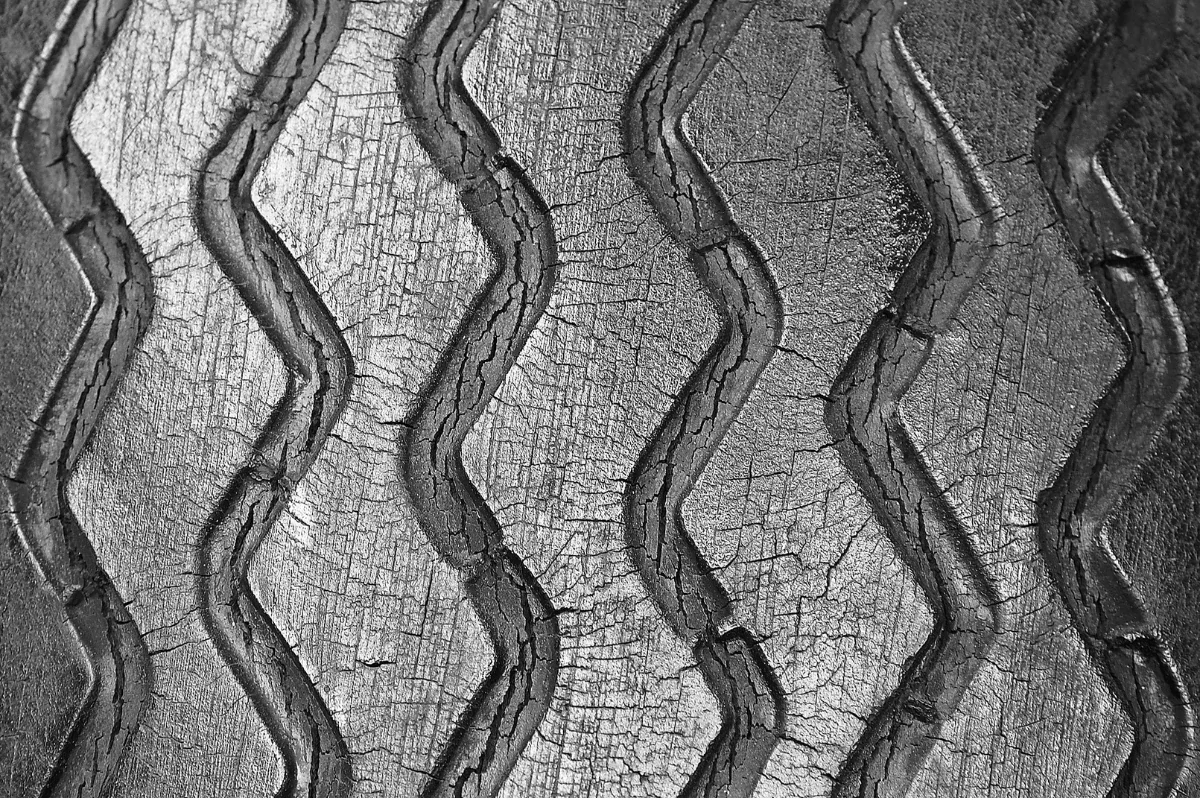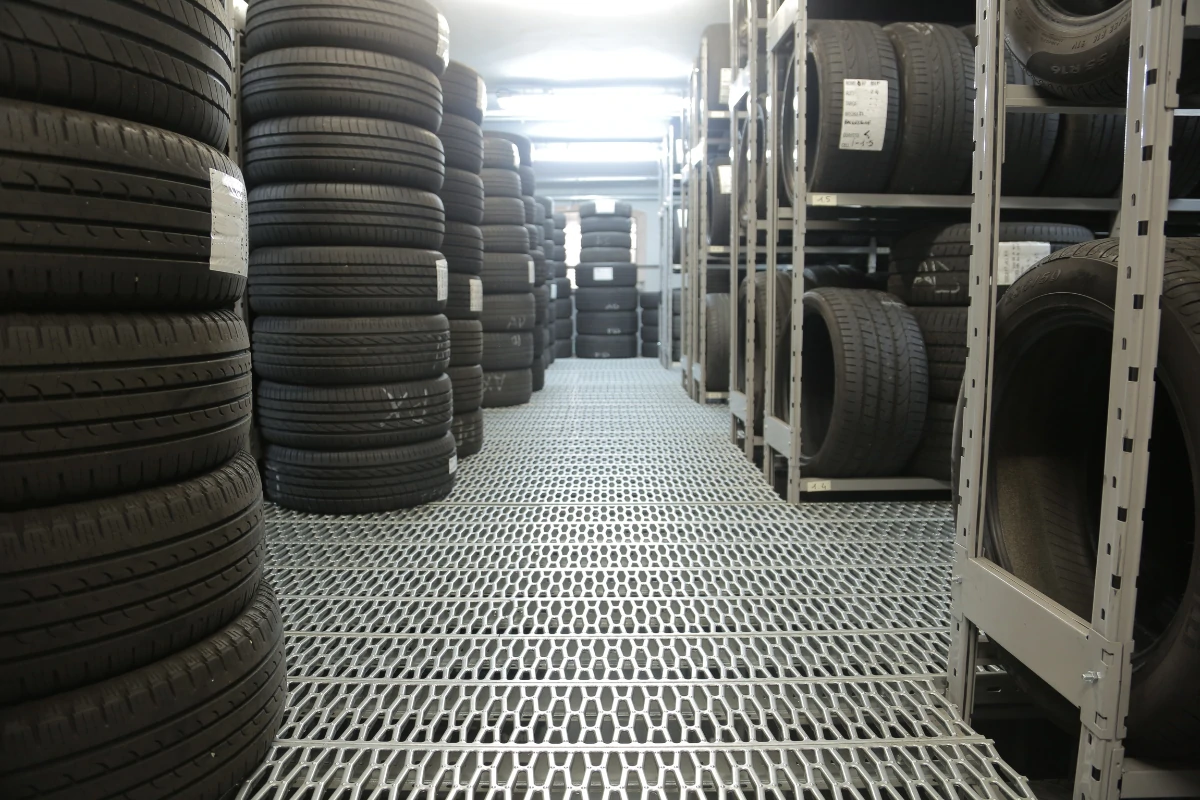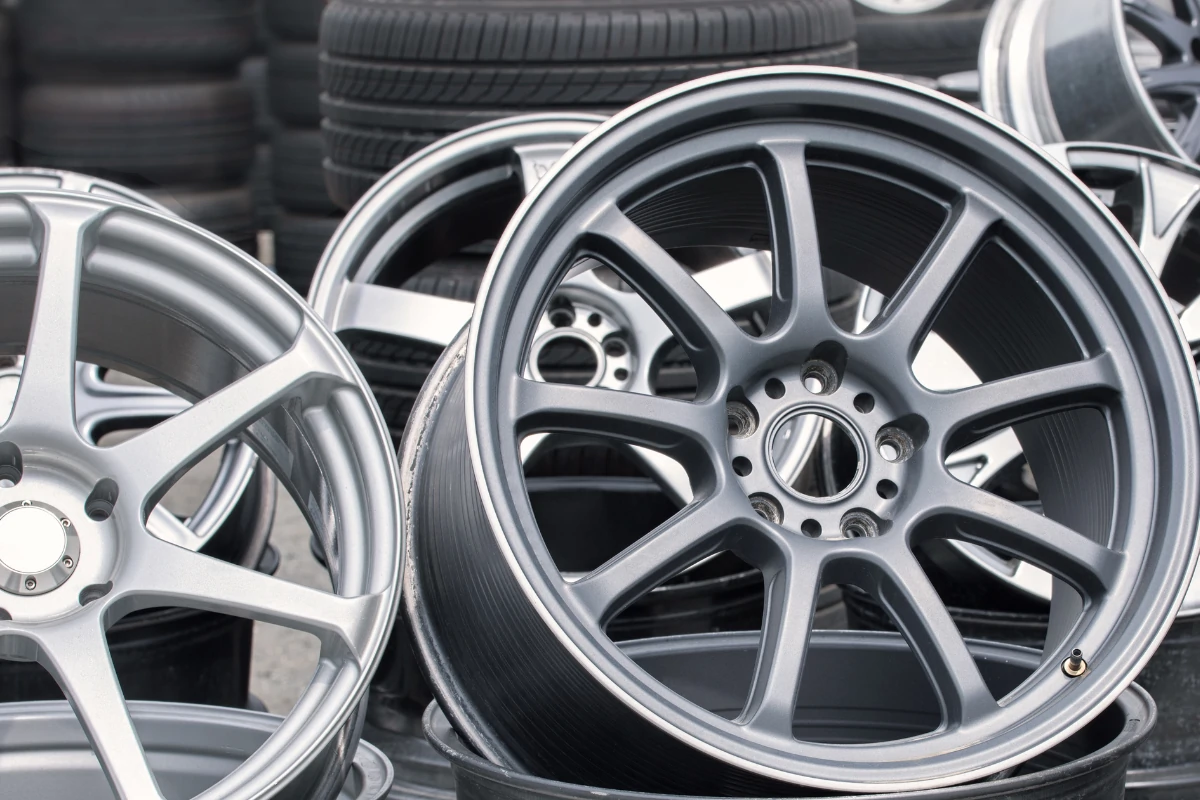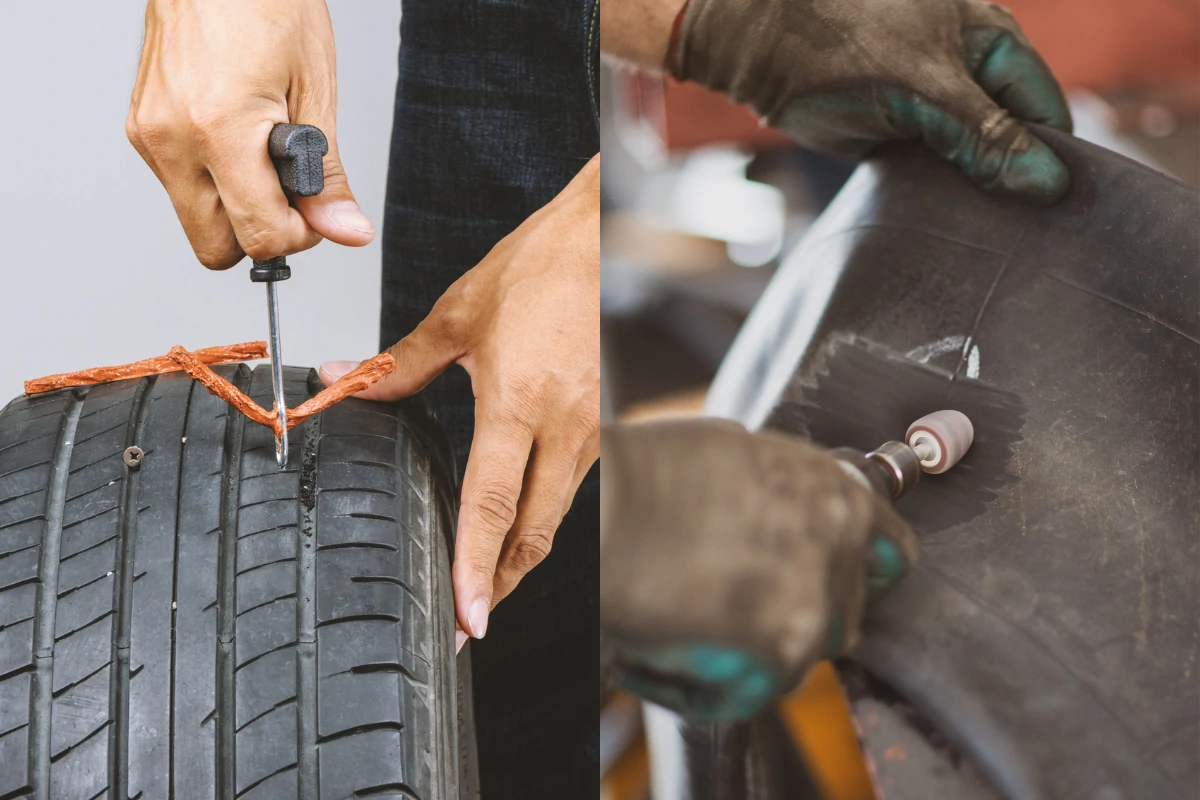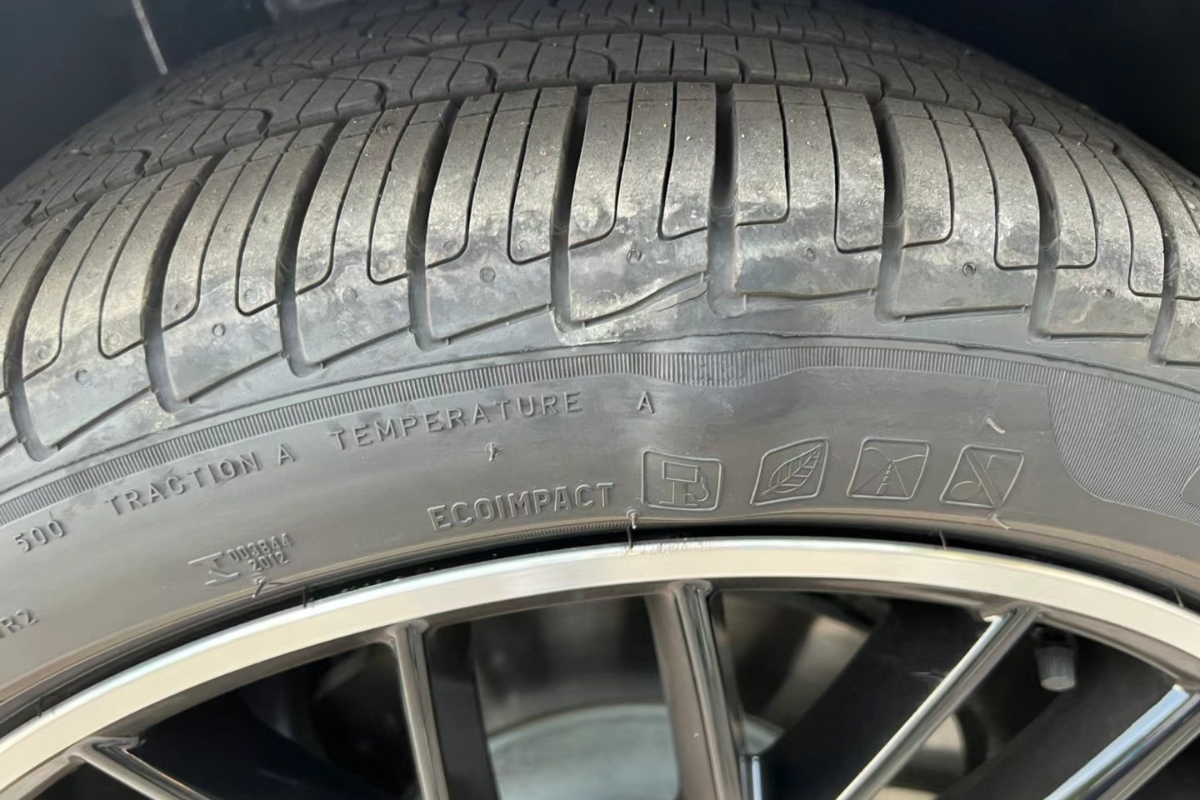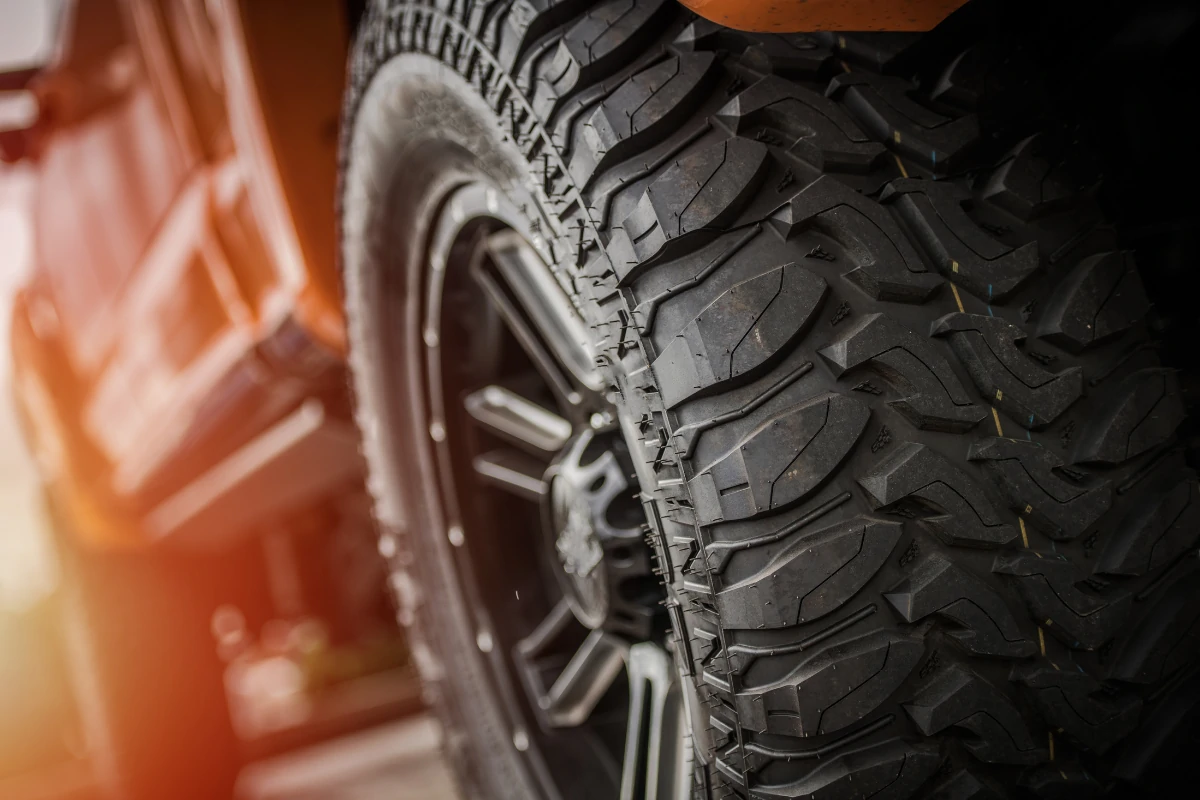Have you ever noticed small cracks on your tires? These are called tire cracks and can be a sign of serious problems. Tire cracking can affect your tires’ performance, safety, and lifespan.
In this article, we will explain what tire cracking is, what causes it, what dangers it poses, and how to prevent it.
Table of Contents
What is Tire Cracking?
Tire cracking is the formation of small cracks on the surface or inside of the tire rubber.
These cracks can appear on the tread (the part that touches the road) or the sidewall (the part that faces the side of the car).
What Causes Tire Cracking?
There are many causes of tire cracking, but here are some of the most common ones:
Age

Tires have a limited lifespan, usually between 6 to 10 years. Tires are usually made of rubber mixed with additives to increase the tire’s resistance to oxidation. But over time, these rubber compounds can gradually weaken, causing them to dry out and crack.
To determine your tire’s age, you need to locate the DOT code on the tire’s sidewall. The code consists of the letter “DOT” followed by up to 13 numbers and letters. The last 4 digits of the code indicate the week and year of manufacture. For example, if the code ends with 0822, the tire was made in the 8th week of 2022.
Limited Mileage
Using your car infrequently or only for short trips can harm your tires. Tires need some heat and bending to stay in good shape. If your car just sits around, the rubber in the tires can deteriorate, causing cracks.
When you drive more, the tires get warm and stay flexible. This helps your tires grip the road and handle well. But if your car remains parked most of the time, the rubber gets stiff and less stretchy. Over time, this can lead to cracks on the tire’s surface, making it weaker and less safe.
So, that’s why RV owners often encounter tire cracks. RVs don’t hit the road as much as everyday cars do.
Exposure to Sunlight and Heat
Sunlight, especially its UV rays, can harm tires by going through the outer layer and breaking the rubber molecules. The rubber molecules are like tiny building blocks that hold the tire together. When they break, the tire becomes weaker and cracks more easily.
Plus, the sun heats up the rubber and makes it expand and contract, resulting in stress on the tire’s surface. This constant cycle of expanding and contracting, along with the drying effect of the sun, leads to cracks forming.
Overinflation or Underinflation
Tires need to have the right amount of air pressure to function properly. Overinflated tires can stretch and bulge, while underinflated tires can flex and bend.
Both situations can cause stress and damage to the rubber. And eventually, the weakened rubber is more likely to crack.
Chemical Exposure
Some chemicals can harm the rubber of your tires. These include oil, gas, brake fluid, antifreeze, salt, and cleaning products. These chemicals can weaken the rubber and make it more susceptible to cracking.
So, regularly cleaning your tires is crucial for maintaining their performance and longevity. It is equally important to exercise caution when selecting the cleaning products to use on them.
Big Temperature Changes and Harsh Climates
Tires can react differently to different temperatures. In cold weather, tires can become stiff and hard. In hot weather, tires can become soft and sticky. These changes can affect the air pressure and shape of your tires. Tires that experience big temperature changes or harsh climates are more likely to crack.
Maybe you think living in a mild climate is fine for your tires. But think again. Imagine you drive on the highway for a long time. Your tires get very hot. Then, you wash your car before putting it away. Your hot tires touch cold water. What do you get? More cracks on your tires.
What are the Dangers of Driving on Cracked Tires?
Driving on cracked tires can be dangerous for you and your car. Here are some of the dangers of driving on cracked tires:
Safety: Seriously cracked tires are more likely to blow out, especially at high speeds. This can lead to accidents and endanger lives.
Performance: Cracks can reduce a tire’s performance. They can lose air pressure, grip, and traction. This will impact your ability to control the vehicle, especially in adverse weather conditions.
Durability: Cracks can shorten a tire’s lifespan. Replacing tires is costly, so keeping them in good condition is important for your wallet.
Fuel Efficiency: Cracks can also decrease fuel efficiency. When tires don’t roll smoothly, the engine has to work harder, using more fuel.
When Are Cracks in Tire Tread Unsafe?
If you happen to notice only TINY CRACKS on your tire treads, there’s no need to worry. These cracks are akin to your skin being a little dry and having minor wrinkles – it’s perfectly fine.

However, if you come across DEEP, WIDE, OR NUMEROUS CRACKS, it’s time to be concerned. These cracks can compromise the integrity and structure of the tire. They can also expose the inner layers of the tire, such as the steel belts or cords, which can cause further damage or punctures.

You should replace your tires if you see any of these signs:
- Cracks that cover more than 25% of the tread area
- Cracks that show any signs of metal or fabric
- Cracks alongside bulges
- Age-related cracks
Difference Between Sidewall Cracking and Tread Cracking?
Sidewall cracking and tread cracking happen in different parts of the tire. And each has its own unique signs and consequences.
Sidewall Cracking
Location: Sidewall cracking appears on the side of the tire, between the tread and the rim.
Causes: It is often caused by exposure to sunlight and environmental factors. The rubber in the sidewall is more susceptible to UV radiation, which can lead to cracking over time.
Implications: Sidewall cracks are generally MORE concerning than tread cracks. This is because the sidewall is thinner than the tread, and the cord layer is more likely to be exposed by cracking. Besides, sidewall cracking can make the tire more susceptible to a blowout. As a result, it’s often recommended to replace a tire with significant sidewall cracks.
Tread Cracking
Location: Tread cracking occurs on the surface of the tire’s tread, the part that contacts the road.
Causes: Tread cracks can be caused by a variety of factors, including aging, exposure to the elements, and wear and tear from regular use.
Implications: While tread cracks may be a sign of tire aging, they are typically LESS concerning than sidewall cracks. Shallow or superficial tread cracks may not be a safety issue. But if they are deep or numerous, it can affect tire performance and safety. If the tread cracks are severe or extend into the tire’s grooves, it can affect grip. Tires with significant tread cracks should be replaced.
In summary, both sidewall and tread cracking can be problematic, but sidewall cracks are generally more concerning due to their location and potential impact on tire integrity.
How to Prevent Tire Cracking?
Preventing tire cracking is essential for the longevity and safety of your tires. Here are some steps you can take to help prevent tire cracking:
1. Protect from UV Rays: Park your vehicle in the shade or in a garage whenever possible to reduce sun exposure. Use tire covers or shields to protect your tires from direct sunlight.
2. Proper Inflation: Maintain the correct tire pressure as the vehicle manufacturer recommends. Underinflated or overinflated tires can lead to cracking.
3. Regular Use: Avoid letting your vehicle sit idle for extended periods, as tires can develop cracks when not in use.
4. Regular Cleaning and Maintenance: Keep your tires clean and free of dirt, debris, and corrosive substances. Clean them with a mild soap and water solution to remove contaminants.
5. Rotate Tires: Regularly rotate your tires to ensure even wear and reduce the likelihood of cracks in specific areas.
6. Balancing and Alignment: Ensure your tires are balanced and aligned correctly. Improper balance and alignment can lead to uneven wear and cracking.
7. Avoid Harsh Chemicals: Be cautious when using cleaning products near your tires. Avoid contact with harsh chemicals such as oil, gasoline, brake fluid, antifreeze, and cleaning solvents.
8. Inspect Tires: Periodically inspect your tires for signs of cracking, especially the sidewalls and tread. Catching cracks early can prevent them from worsening.
9. Replace Old Tires: Replace your tires as the manufacturer recommends, typically every six years, even if they have good tread depth. Rubber can deteriorate with age, leading to cracking.
10. Choose High-Quality Tires: Invest in quality tires from reputable brands, as they often have better resistance to cracking.
11. Avoid Overloading: Do not exceed the recommended load capacity of your tires, as overloading can cause excessive wear and cracking.
By following these preventative measures, you can significantly reduce the risk of tire cracking, ensuring the safety and performance of your tires.
Can Cracked Tires Be Repaired?
Cracked tires can be repaired, but only for appearance. The issue can be masked but not fixed.
There are fillers on the market that make it easy to fill the cracks in a tire’s sidewall on your own. But once dry rot develops in your tires, its spread can only be slowed down.
If you’re unsure whether your tires need replacing, it’s always a good idea to have them inspected by a professional.
FAQ
Is it safe to drive on dry rotted tires?
No, it is not safe to drive on dry rotted tires. Dry rot is a term used to describe severe tire cracking caused by age, heat, or chemicals. Dry rotted tires can lose air pressure, traction, and handling. They can also increase the risk of blowouts, which can cause accidents and injuries.
Should I replace my tires if they are cracking?
It depends.
There’s no need to worry if there are TINY CRACKS on your tire treads. But if they are DEEP, WIDE, OR NUMEROUS CRACKS, it’s time to replace your tires. Severe cracking is a sign of damage and deterioration of your tire rubber. It can affect the performance and safety of your tires. It can also lead to blowouts, which can cause accidents and injuries.
How much cracking is OK on a tire?
There is no definitive answer to how much cracking is OK on a tire. However, as a general rule of thumb, you should replace your tire if you see any of these signs:
- Cracks that cover more than 25% of the tread area
- Cracks that show any signs of metal or fabric
- Cracks alongside bulges
- Age-related cracks
What keeps tires from cracking?
The best way to keep tires from cracking is to take good care of them and follow some simple tips, such as:
- Regular maintenance and inspections
- Protect from UV Rays
- Proper inflation
- Storing tires properly
- Regular rotation, balance, and alignment
- Avoiding chemical exposure
- Replacing old tires
Conclusion
Tire cracking is a common issue that can harm your tires’ quality and safety. It can happen because of many factors, like how old the tires are, heat, pressure, and chemicals. When tires crack, they grip the road less, and you might have a higher chance of a tire bursting, which can lead to accidents and injuries. You can stop tire cracking by looking after your tires and following some easy advice.
We hope this post helps you know more about tire cracking and how to keep your rides safe and smooth. Stay safe, and may your tires always roll well on the road ahead.

